Tucked away in the Sahyadri hills, Bhaja Caves Lonavala escapes the usual weekend chatter around this popular hill station. Far from the crowds and luxury resorts, this 2nd-century BCE rock-cut marvel offers something rare – stillness, heritage, and raw natural beauty.
The hike begins at Malavli, a quiet railway stop between Pune and Lonavala that most travellers overlook. From here, a 2.5-kilometre walk leads to a cliffside complex of ancient Buddhist caves – weathered by time, yet striking in detail. Arched prayer halls, meditative cells, and intricately carved stupas await, all hewn from volcanic rock.
Bhaja Caves Lonavala is one of the best places to visit in Lonavala for history lovers, architecture enthusiasts, and culture seekers. Nature lovers, birdwatchers, and those craving quietude will also find this place rewarding.
Ideal for a one-day escape from Mumbai or Pune, Bhaja Caves is a time capsule that transports you back centuries.
Based on our personal hiking experience, this guide offers more than just directions—it’s your inside track to planning a stylish, effortless day trip to one of Maharashtra’s most quietly spectacular treasures.
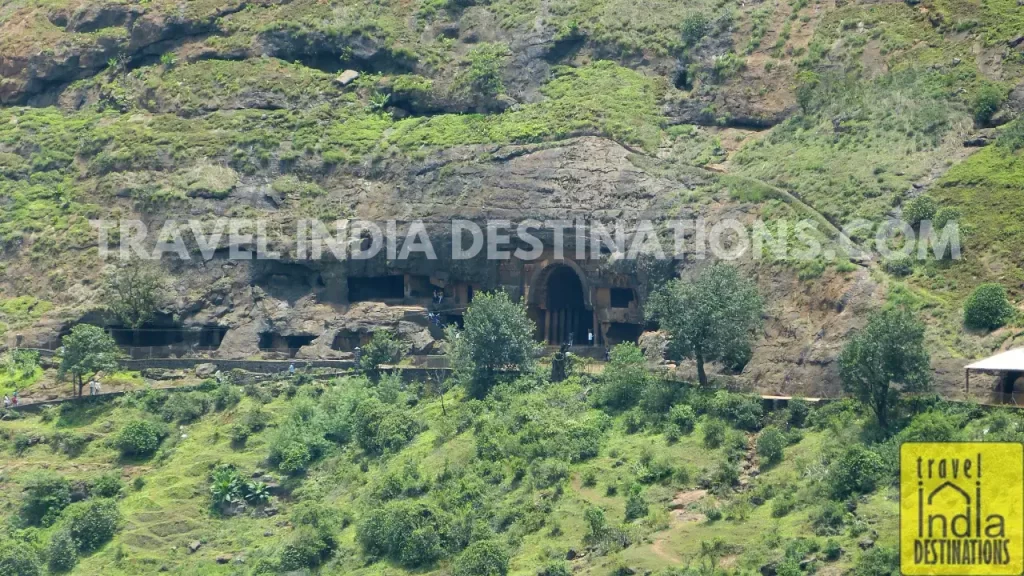
Why Visit Bhaja Caves: A Historical Overview
Bhaja Caves in Lonavala offer more than just scenic beauty; they’re a window into India’s rich Buddhist history. Carved into the mountainside during the 2nd century BCE, these rock-cut caves were once a thriving Buddhist monastery.
The star of Bhaja’s architectural legacy is Cave 12 — among the oldest surviving chaitya halls in India. Its stone-carved ceiling mimics timber ribs, a rare feature that blends form and function in ancient Buddhist design. This early attempt at structural realism makes Bhaja not just spiritually significant, but architecturally pioneering.
The caves are known for their stunning architecture and intricate carvings, including large prayer halls with stupas, and small secluded cells used by monks for meditation.
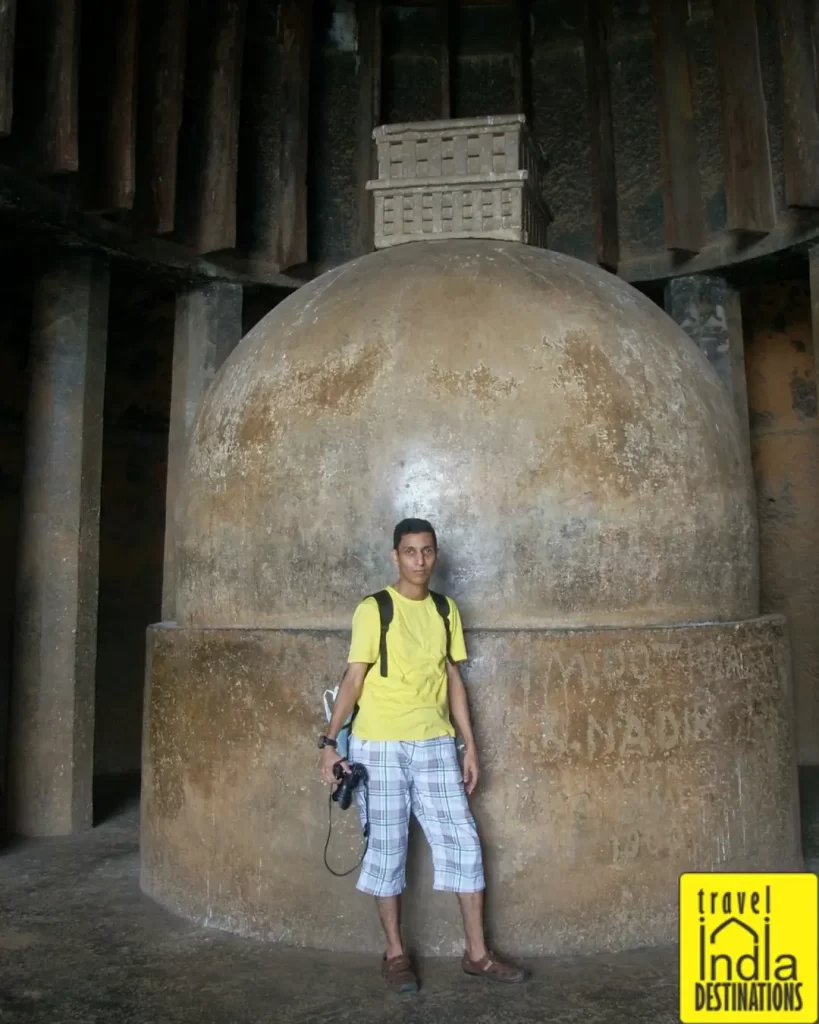
These caves are believed to have been used by Buddhist monks as a place for rest during their travels, offering a rare glimpse into the ancient monastic life.
With their historical significance and serene location, Bhaja Caves are a must-visit for those interested in history, architecture, and Buddhist culture. For more detailed insights, explore Incredible India’s page on Bhaja Caves.
Whether you’re an architecture enthusiast or a history buff, exploring the caves will immerse you in a bygone era. For nature lovers, the caves are also surrounded by lush greenery, making the journey both a historical and scenic delight.
The quiet atmosphere invites reflection, and the sense of ancient history that fills the air adds a mystical charm to the experience.
How to Reach Bhaja Caves: A Seamless Journey
Nestled above the tranquil village of Bhaje, near Malavli, Bhaja Caves offers an easy-to-reach retreat from the hustle of nearby Lonavala and Pune. Getting here is straightforward, requiring only a pair of sturdy shoes and a dash of enthusiasm.
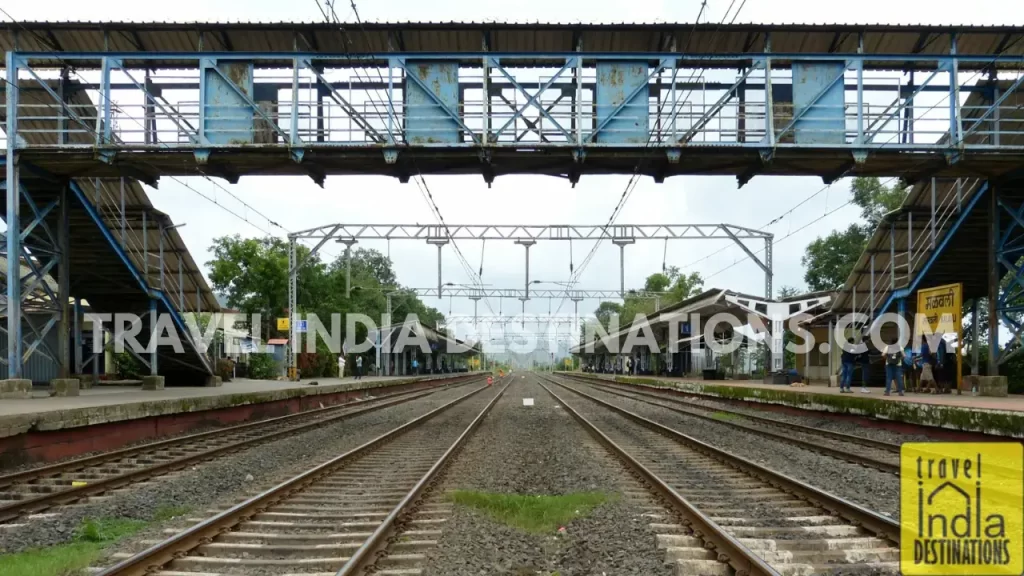
From Mumbai via Train
If you are travelling by train, take any Mumbai–Pune express train and get down at Lonavala. Then, buy a local train ticket at Lonavala station and board the next Lonavala–Pune local heading toward Pune. Get off at the very next stop—Malavli station.
Pro Tip: Train Route I Personally Recommend
For a smooth and well-timed journey, I recommend the 22105 Indrayani Express, which departs CSTM at 5:40 AM and reaches Lonavala by 7:58 AM. This gives you a comfortable 20-minute buffer to buy your local train ticket and catch the 8:20 AM Lonavala–Pune local, reaching Malavli at 8:26 AM—just in time for a cool morning walk to the caves.
We personally took the 12127 Mumbai–Pune Intercity Express, which leaves CSTM at 6:40 AM and reaches Lonavala by 8:48 AM. That gave us more than an hour to relax and enjoy breakfast at Lonavala station before boarding the 10:05 AM Shivaji Nagar local, reaching Malavli by 10:11 AM. We reached the caves comfortably by 11:00 AM.
From Malavli station, enjoy a scenic 2.5-kilometre walk. It starts on a tarred village road and gradually leads you to the stone steps ascending to Bhaja Caves. The ASI ticket counter is located just before the cave entrance and opens at 9:00 AM.
From Pune via Train
Catch the local train from Pune to Lonavala, then follow the same route via Malavli Station for the 2.5-kilometre hike.
Take the 9:57 AM local train from Pune to Lonavala and you’ll reach Malavli by 11:02 AM
If you prefer earlier timing, you can catch the 11010 Sinhagad Express which departs from Pune Junction at 6:05 AM and reach Lonavala by 7:13 AM. This gives you an hour at the Lonavala Station to buy tickets and enjoy breakfast before you catch the 8:20 AM Lonavala-Pune local train and reach Malavli by 8:26 AM.
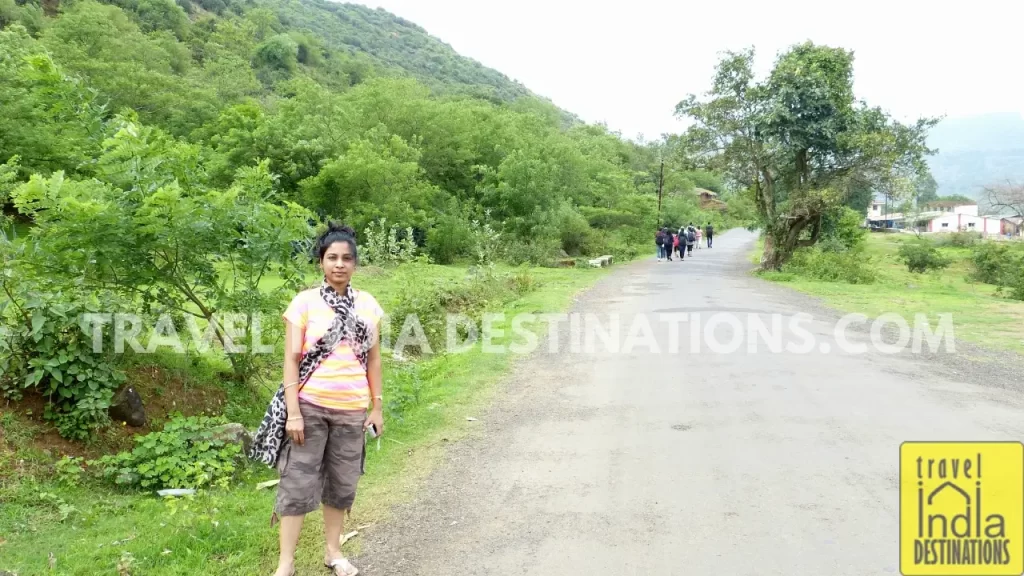
Hike from Malavli Station to Bhaja Caves:
A 30 to 45 minute walk leads you through picturesque surroundings, with stunning views of the village, distant waterfalls (during monsoon), and lush green hills. As you climb the 250 steps (don’t worry about counting!), you’re rewarded with a truly breathtaking panoramic view.
By Car:
For those driving, simply set your map to Bhaje Caves Road. While there’s no official parking lot, you’ll find ample space near the base of the hike. Park, and in about 20-30 minutes, you’ll reach the entrance, ready to begin your exploration.
Best Time to Visit:
The months between July and February offer the most pleasant weather, especially in the early mornings when the cool breeze and green landscape provide a refreshing escape. Summer afternoons are best avoided, as the hike can feel more demanding under the intense sun.
Entry Fees and Timings
Entry Fees:
Indian Citizens: ₹25
Foreign Citizens: ₹300
Children Below 15 Years: Free
Timings:
Opening Hours: 9:00 AM to 5:00 PM
The walk from Malavli to Bhaja Caves is not your average uphill trudge. It’s a scenic journey through lush greenery, open skies, and timeworn paths of the Bhaje village that whisper stories of the past.
You begin on a tarred road, lined with wildflowers and old village homes. The first stretch is easy — flat, breezy, and quiet, with just the distant echo of a train passing below. Locals may pass by on bikes or foot, carrying on with their routine.
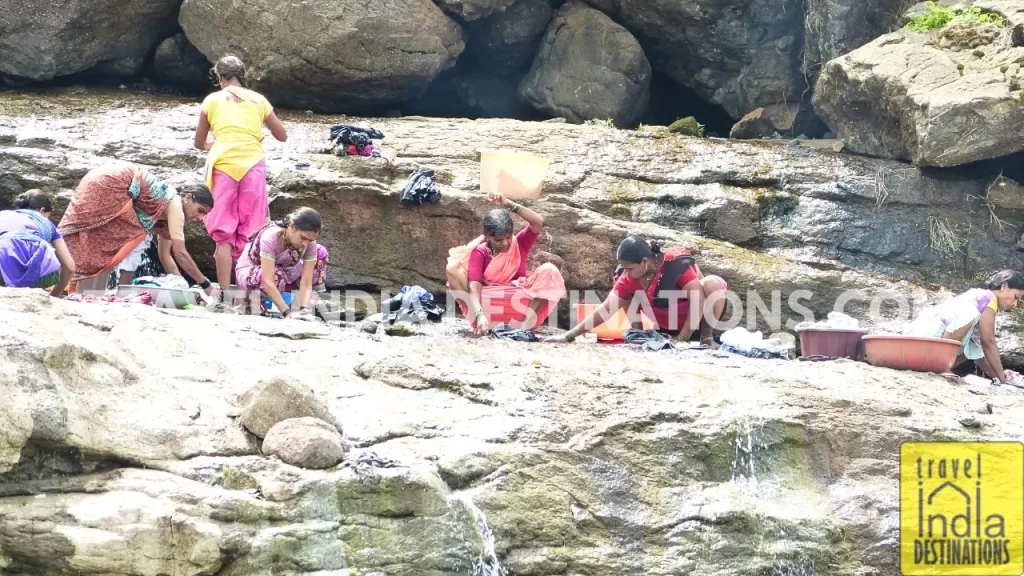
This offers a unique window into the rural lifestyle that we often ignore as we lead our modern urban lives. As we walked through the Bhaje village road, we came aross multiple scenes that reflect the rural Indian lifestyle.
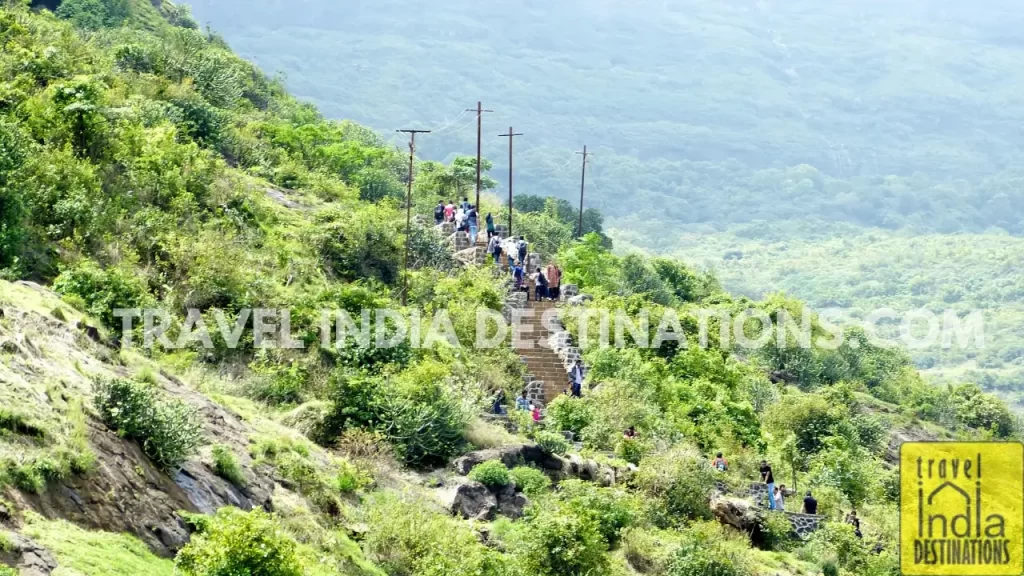
At one point, the stone steps appear, nicely made, these steps – about 250 of them – are your final climb.
They wind up the hillside, offering panoramic views of the Bhaje village and surrounding Sahyadris. During monsoon, expect waterfalls, chirping birds, and soft mist floating through the valley.
This 35-minute walk offers you several moments to pause and admire the landscape surrounding you. The climb being well-marked and steady requires no hiking gear. However, make sure you have comfortable shoes, a bottle of water to stay hydrated and probably a camera to capture some phenomenal shots.
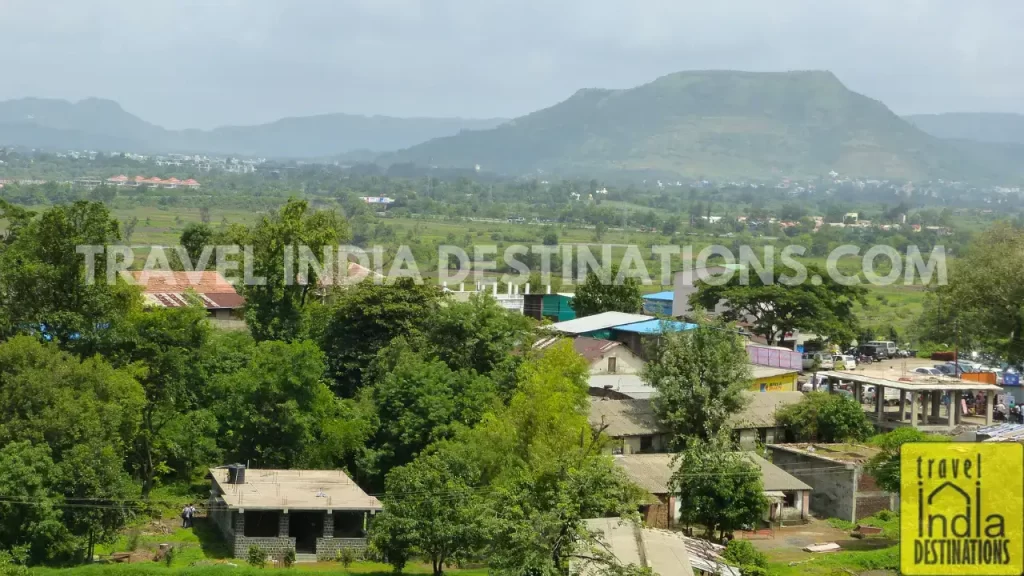
As you near the top, the ticket window comes into view. Once you have bought the tickets, just a few more steps lead you to the caves. Cut straight into the cliffside, they look both majestic and humble. From below, they seem small. But as you stand before them, you’ll realise just how vast and detailed this ancient complex is.
Exploring Bhaja Caves: What You’ll Discover
Step inside Bhaja Caves, and the first thing you’ll notice is the quiet vibe that it offers. Although, if you are visiting on busy weekends, you will hear the chatter of the tourists around, but otherwise you’ll enjoy the calm that only such ancient places can hold.
The site has 22 rock-cut caves, carved from volcanic basalt in the 2nd century BCE. The most striking of them is Cave 12, the Chaitya hall. It features a beautifully arched wooden-style ceiling — all carved from stone — and a grand stupa at its centre.
Stand in the middle and look up; you’ll see ribs etched into the ceiling that mimic timber beams, evoking ship hulls or great temples.
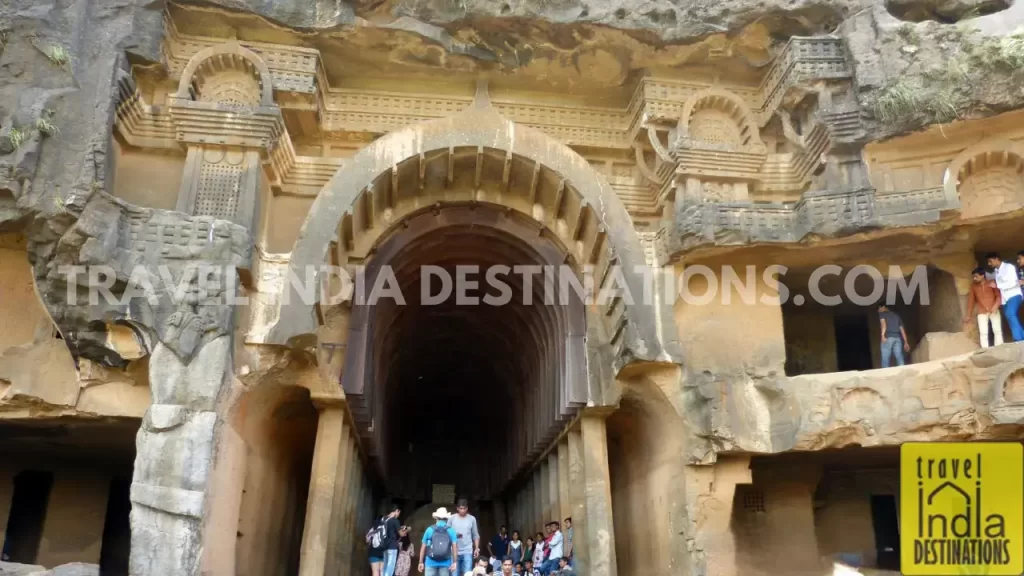
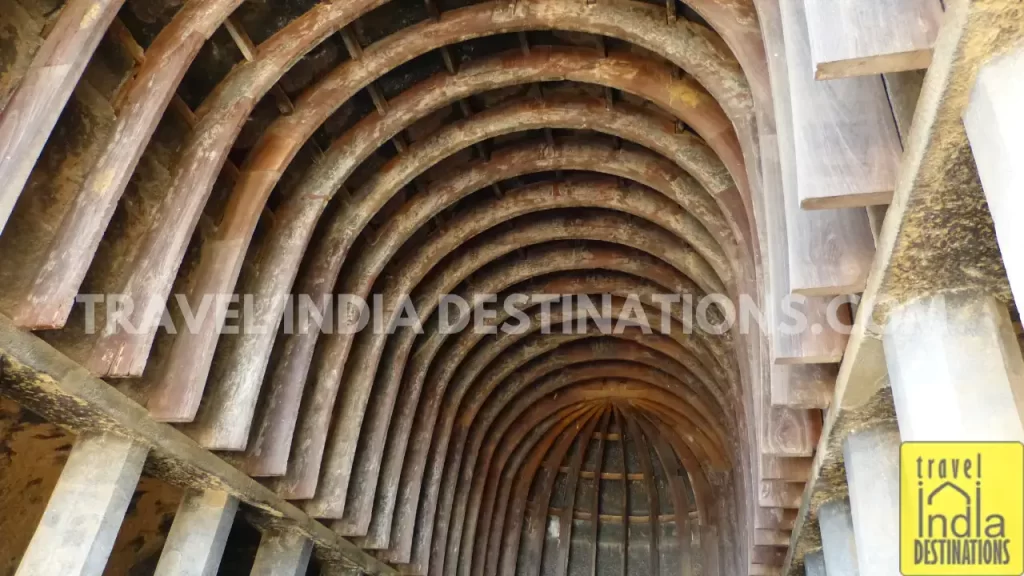
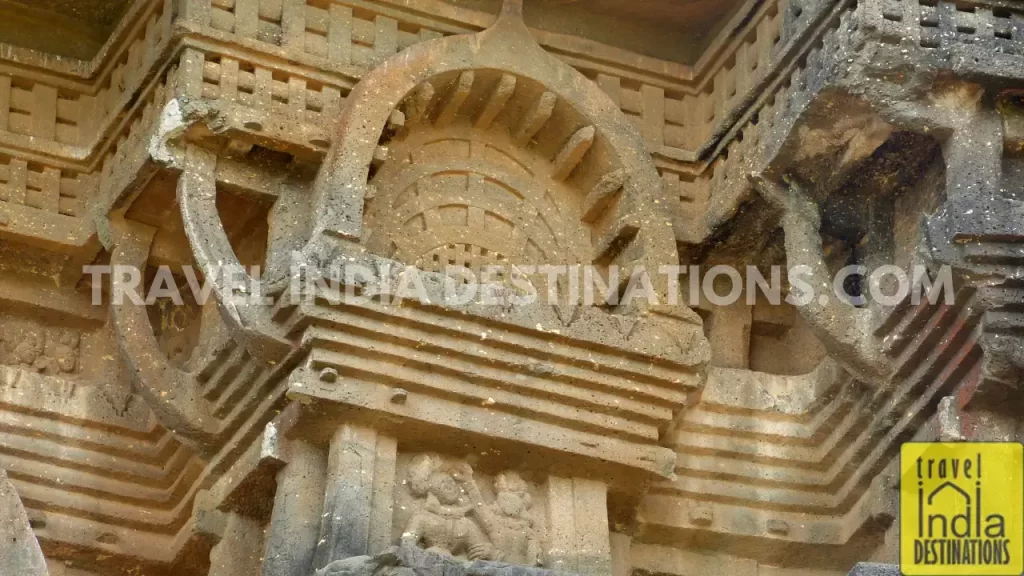
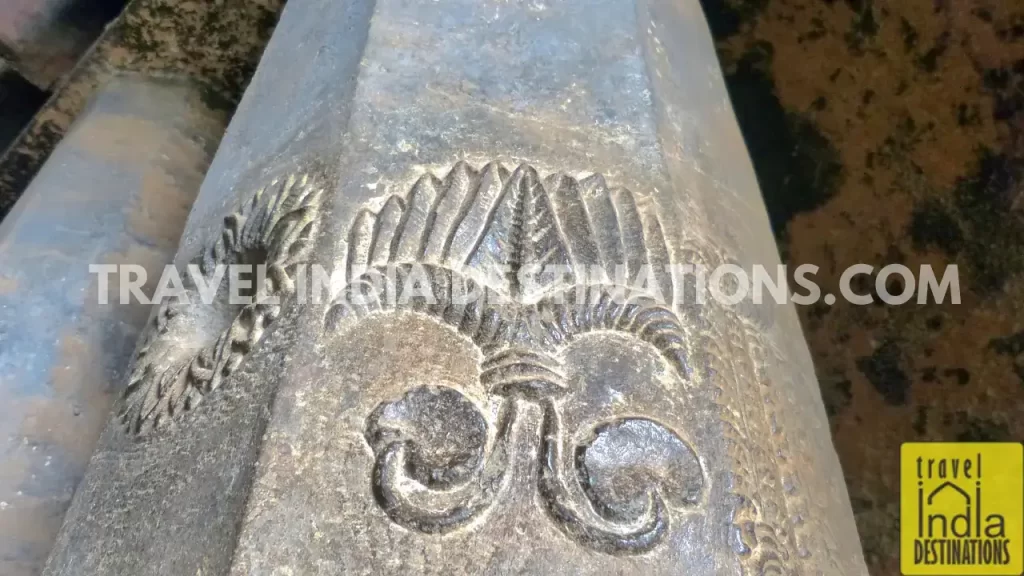
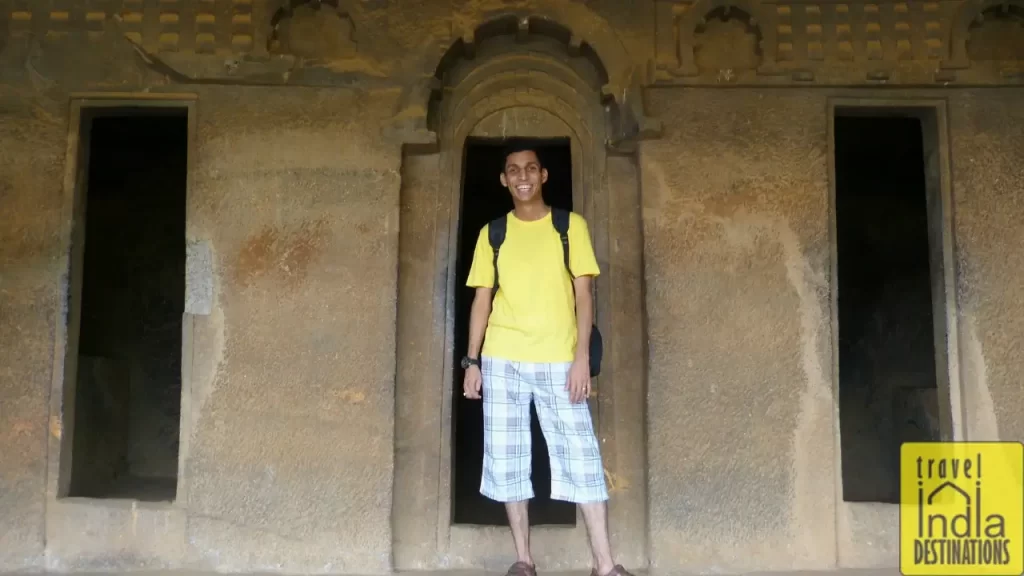
Many caves were once monks’ residences, with simple rectangular cells meant for meditation and rest. You’ll also find viharas, water cisterns, and carved stupas.
The weather has softened some features, but the detail remains impressive — especially the reliefs of dancers, floral motifs, and mythological scenes.
On the far end of the complex are 14 stupas, believed to be memorials of monks who once lived here. Each carries inscriptions in Brahmi script, naming the monk and his lineage. It’s a quiet, moving reminder of Bhaja’s original purpose — not tourism, but devotion.
Bhaja doesn’t scream for your attention. It draws you in slowly, layer by layer. Even if you’re not into history, you’ll feel something here — a reverence for time, craftsmanship, and stillness.
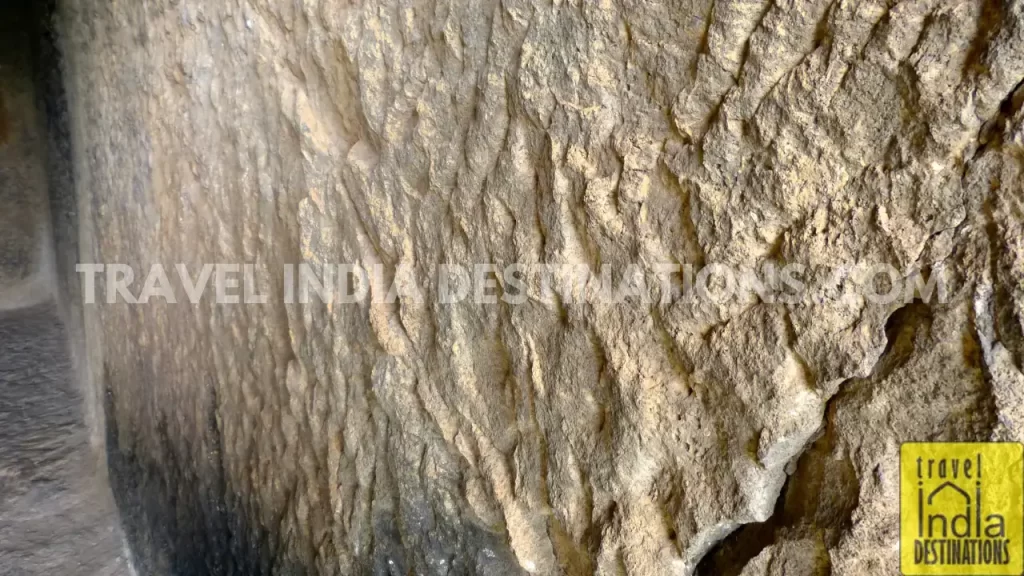
If you’re seeking a deeper connection to India’s Buddhist heritage, read our guide on our exclusive trip to Global Vipassana Pagoda in Mumbai, a beacon of peace and reflection. Unlike the rugged beauty of Bhaja Caves, this place shining in red and gold offers a stunning visual contrast reflecting Buddhist architecture and promising a contemplative journey through India’s spiritual landscape.
Tips To Keep in Mind While Visiting Bhaja Caves
While you are exploring some of the places to visit in Lonavala you can add Bhaja Caves to your itinerary. However, this is a hillside location and therefore you need to be prepared for what’s coming up.
1. Take a Walk or a Rickshaw
Bhaja Caves may not require a professional hiker’s stamina, but a little preparation can make your visit smoother — and more enjoyable. The distance from the Malavli railway station to the caves is 2.5 kilometres which should take approximately 35 minutes. This is a great way to enhance your Bhaja Caves Lonavala expedition, but in case you want to skip you can always take a rickshaw from the station which will drop you at the start of the steps.
2. Wear the Right Footwear
If you are planning on walking the entire path it is essential to have excellent walking shoes. Always ensure that the shoe has excellent grip on wet surfaces, especially when you are hiking during the monsoon season. Avoid slippers and flimsy footwear.
3. Carry Water and Light Snacks
Since you are going to walk quite a distance it is always a good idea to have a good breakfast. One of the best things to do is to enjoy your breakfast while you’re on the train. This will help you stay full and comfortable while you are hiking from Malavli railway station to Bhaja Caves Lonavala. You won’t find food stalls on the way up. Hydrate well and bring a small energy bar or fruit. Please make sure that you do not litter the area with wrappers, empty packets and used plastic bottles.
4. Start Early
If you are thinking of the best time to visit Bhaja Caves Lonavala it is early morning. The caves open at 9:00 AM. You can use that to your advantage and enjoy the cool morning weather when the sun is softer and light is ideal for photography.
5. Sunscreen is Essential
While you may not feel the need for sunscreen based on our experience, yes, sunscreen is a must. As you climb higher, the intensity of sunlight can tan your skin, especially if you are there on the site at around 11 AM. This is essential even when you’re going in the monsoon season.
6. Avoid Weekends If Possible
Most visitors visit Bhaja Caves Lonavala on weekends. While Bhaja Caves is still relatively under the radar, the weekend is when you will find more hikers and tourists here. If you prefer a more quiet experience you should probably visit the cave on weekdays.
7. Respect the Site
These caves are over 2000 years old and have historical significance. Hence, we must show respect towards it. Do not climb on the stupas or touch the carvings unnecessarily.
8. Bring Your Camera
Bhaja Caves Lonavala is a great place for those who love photography. While you are hiking upwards you can capture some panoramic shots of the Bhaje village. Having a wide-angle lens allows you to capture the narrow and dark spaces of the caves. Avoid flash and try to work with natural light.
9. Take It Slow
One of the best ways to enjoy the beauty of Bhaja Caves Lonavala is to go slow. You may pause often, take in the views and soak in the sense of timelessness.
10. Explore Other Places Nearby
Once you are done exploring Bhaja Caves you can also enjoy a scenic hike towards Lohagad Fort on the same day. Read through our exclusive hiking experience to Lohagad Fort base with pictures to help you plan yours.
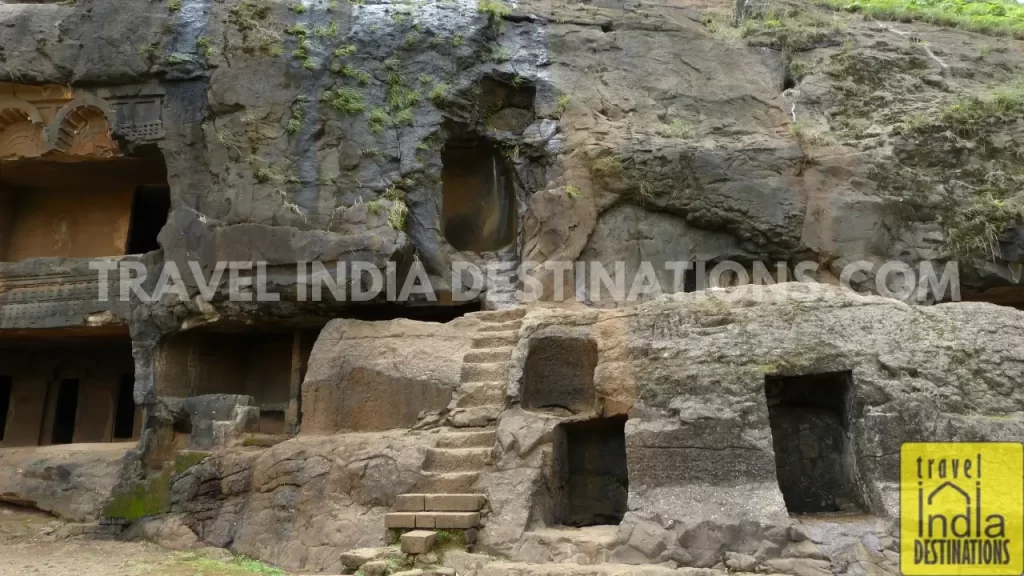
Conclusion: Making the Most of Your Bhaja Caves Experience
Bhaja Caves may not shout for attention the way other tourist spots in Lonavala do—but that is exactly its charm. This ancient cluster of Buddhist rock-cut caves invites you to slow down, observe, and reconnect—with history, with nature, and perhaps even with yourself.
Whether you’re a weekend traveller from Mumbai or Pune, a culture buff seeking something deeper, or someone who just wants a quiet place wrapped in the arms of the Sahyadris—Bhaja delivers.
Pair it with a beginner-friendly hike to Lohagad Fort or a relaxed visit to Bhushi Dam, and you’ve got yourself a fulfilling one-day escape. If you’re up for a bit more adventure, our guide to trekking from Bhaja Caves to Lohagad Fort walks you through the scenic route connecting both. Or just sit quietly in the Chaitya hall, tracing your fingers along stone carvings that have stood for over two millennia.
This is not just a photo-op. It’s a reminder that even in today’s fast-moving world, some things are meant to be absorbed slowly.
So, lace up, start early, and leave your rush behind. Bhaja Caves waits quietly—but only for those who know how to listen.
15 comments
Simply marvelous! It makes me long for our Costa Rica adventures again. Better yet, I really wish to visit other places as well, soaking up the richness of the history of the Earth. You all look wonderful, like you had a lot of fun. And there is beautiful Sarah by your side, you make a lovely couple. I am eager to see the next leg of your adventure!
Thanks Cheryl. Sarah was bit hesitant with her pictures being posted online, but eventually she was convinced. The next part is going to come up very soon.
Sharukh, what an incredible trek. Your photographs and commentary take me right along on every step. Nice to see your blog post this morning. Look forward to more. Christine
Thanks Christine for your comment. I am glad that you enjoyed the post and felt like you were with me all the way along. That was the purpose of the post. We moved further up to the fort and that’s when the challenge got more exciting. Stay tuned for it as that is the next post coming up.
Great photos. Great adventure!
Thank you 🙂
That looks like quite the hike! Your pictures are gorgeous, and it looks like you all enjoyed the adventure!
Thanks Jessica for the comment. Yes, we enjoyed it completely although we were exhausted by the time we reached the caves, but we had a higher goal and that was still way too up in the mountains.
The pictures are great and I love reading along with your journey. This sounds like a great hike.
Thanks Dan for your support and love. You guys already saw the pictures, but I wanted to share it with my post. Hope the next part of the trek keeps you excited as well.
Your descriptions are simply amazing. I felt like I was traveling with you while reading this.
Thank you
Sharukh, by the name you are a hero and also by your blog. You have detailed everything about the trek. I had been there once, but went there by car and climbed the steps. Your route described above is more scenic and worth to experience at least once. Keep writing …..
thanks !
Thank you Yogesh for such a lovely comment. I think when you go by car you get the comfort, but you don’t experience the adventure that comes along. From here, I mean from Bhaja Caves we walked further up to the Lohagad Fort and that part of the trek will soon come up on the blog. Keep reading. Stay connected.
Wow these pictures are amazing – makes me want to start my own “travel with a camera” blog 🙂